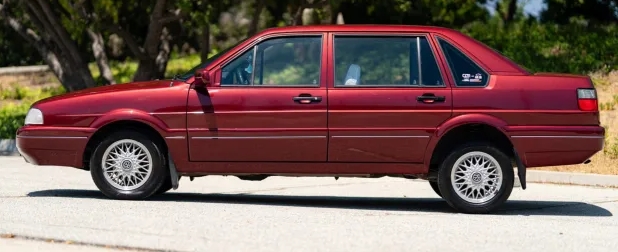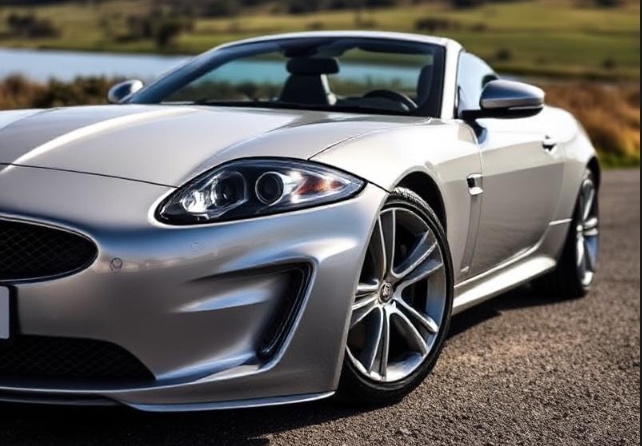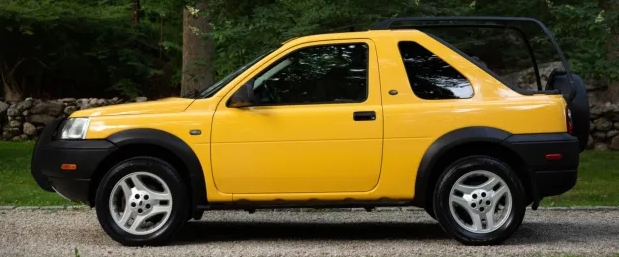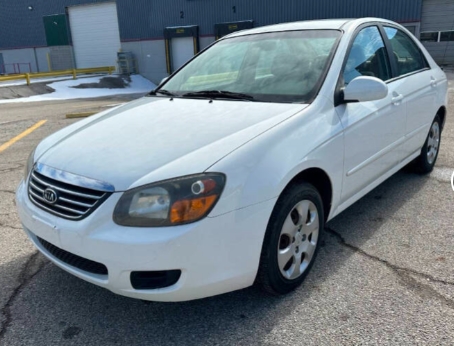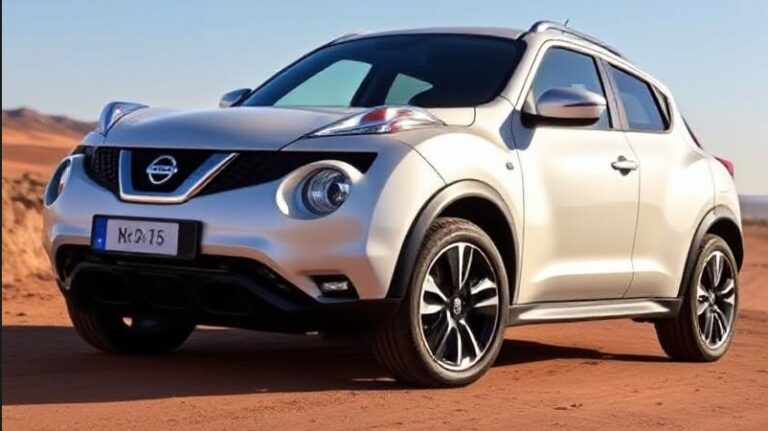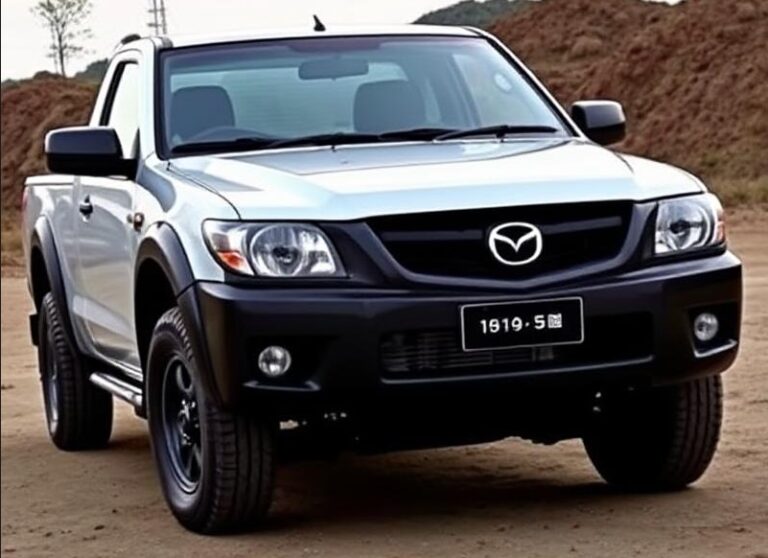The Enduring Legacy of the Volkswagen Santana: A Tale of Evolution and Adaptation
The Volkswagen Santana. For many in the Western world, the name conjures images of a rather unremarkable sedan that briefly graced European showrooms in the 1980s. Yet, for a significant portion of the globe, particularly in Asia, the Santana became a symbol of automotive resilience, a workhorse that evolved, adapted, and endured for decades, far beyond its initial conception. Its story is not one of groundbreaking technological leaps or iconic design revolutions, but rather a testament to robust engineering, cost-effectiveness, and the ability to cater to diverse market needs. This article will delve into the fascinating evolution of the Volkswagen Santana, tracing its production years, exploring its various models, and shedding light on the trim levels that defined its long and impactful journey.
The Genesis: A European Foundation for a Global Future
The Santana’s story begins in Germany, as a derivative of the Volkswagen Passat. Introduced in Europe in 1981, the Santana (internally codenamed Type 321) was essentially a three-box sedan version of the Passat B2. While the Passat offered a more versatile hatchback and estate (wagon) body style, the Santana aimed for a more traditional saloon appeal, targeting buyers who preferred a distinct trunk.
In its initial European guise, the Santana was powered by a range of familiar Volkswagen engines. These included:
- Petrol engines: 1.3L, 1.6L, 1.8L (carburetted and later injected), and a 2.0L.
- Diesel engines: 1.6L naturally aspirated and a 1.6L turbocharged diesel.
Trim levels in Europe were typically designated by engine size or descriptive names, such as:
- L (Luftgekühlt – air-cooled, though this designation often persisted from earlier air-cooled VWs): Basic trim with essential features.
- CL (Comfortable Luftgekühlt): A step up in comfort and features.
- GL (Grand Luftgekühlt): The higher-end trim, often featuring more luxurious appointments like velour upholstery, power steering, and electric windows.
- GT (Grand Turismo): Sportier variants, sometimes with more powerful engines and enhanced suspension.
- GTD (Grand Turismo Diesel): The performance-oriented diesel model.
The European Santana’s production run was relatively short-lived. Facing stiff competition and evolving consumer preferences, Volkswagen ultimately discontinued the Santana in Europe in 1988, with the Passat taking over its sedan duties. However, its story was far from over.
.
THIS is GOOD stuff if your car is in need:

.
The Transatlantic Leap: Finding a New Home in China
While the Santana faded from European memory, its robust design and relatively simple mechanics proved to be a perfect fit for emerging markets, most notably China. In 1982, Volkswagen entered into a joint venture with China FAW Group (First Automobile Works). The initial plan was to produce the Santana for the Chinese market, and this decision would sow the seeds for the Santana’s enduring legacy.
The initial Chinese-produced Santana was largely identical to its European counterpart. It was assembled from Semi-Knocked Down (SKD) kits and gradually transitioned to more localized production. The objective was clear: to provide a reliable, modern, and accessible passenger car for a nation undergoing rapid economic development.
The Chinese Santana: A Chronicle of Evolution and Adaptation
The Volkswagen Santana’s true evolution began in China, where it became a cornerstone of the country’s automotive industry. The joint venture, later evolving into FAW-Volkswagen, focused on adapting the Santana to meet the specific demands and evolving tastes of the Chinese consumer.
The “Old Santana” Era (Early 1980s – Early 2000s): The Unyielding Workhorse
For nearly two decades, the fundamental design of the Santana remained remarkably consistent. This period is often referred to as the “Old Santana” era. This wasn’t necessarily a sign of stagnation, but rather a deliberate strategy to ensure reliability, ease of maintenance, and affordability.
- Models and Engine Options: Throughout this period, the primary Santana model was the sedan. Engine options were primarily focused on practicality and fuel efficiency, reflecting the economic realities of the time. Common engines included:
- 1.3L petrol engine
- 1.6L petrol engine
- A 1.8L petrol engine was also offered, often in more upscale versions.
- Diesel engines, while initially available, became less common in passenger versions as petrol became more prevalent.
- Trim Levels: The trim levels in China followed a similar hierarchical structure to Europe, but with a distinct Chinese flavor and evolving nomenclature over time:
- Standard/Basic: The most affordable option, with basic amenities.
- DL: A mid-range trim, offering a slight increase in comfort and features.
- GL/GLI: Higher trims, often featuring power steering, improved interiors, and sometimes air conditioning.
- Executive/Special Editions: As the market matured, special editions and more luxurious trims emerged, catering to a growing segment of buyers seeking more refinement and advanced features for their time.
The “Old Santana” was lauded for its durability and its ability to withstand the often-harsh road conditions in China. It became a popular choice for taxis, government fleets, and private ownership. Its boxy, no-nonsense design, while perhaps dated by Western standards, was a symbol of progress and reliability.
The “New Santana” Era (Early 2000s onwards): The First Major Facelift and Diversification
The turn of the millennium marked a significant turning point for the Chinese Santana. While the underlying platform still retained its DNA, a substantial facelift brought it more in line with contemporary automotive design. This era is often referred to as the “New Santana.”
- The 2000 Facelift: In 2000, FAW-Volkswagen introduced a significantly updated Santana. The exterior received a modern facelift with new headlights, grille, bumpers, and taillights. The interior also saw improvements in materials and design, offering a more comfortable and modern cabin.
- Engine Advancements: While the trusty 1.6L engine remained a staple, newer and more refined petrol engines were introduced, including:
- 1.8L petrol engine
- 2.0L petrol engine (often found in higher trims)
- New Body Styles: Crucially, the “New Santana” era saw the introduction of new body styles to cater to a broader market:
- Santana Estate (Wagon): Introduced to offer greater practicality and cargo space.
- Santana Variant: Another name for the estate version, emphasizing its utility.
- Trim Level Evolution: Trim levels became more nuanced and aligned with international naming conventions:
- GLi: Remaining a popular mid-range option.
- GSi: A sportier variant, often with enhanced styling and features.
- V6 (rare): In some markets, a V6 engine was offered, signifying a more potent and luxurious offering.
- Specific feature-based trims: Trim levels often highlighted specific features like air conditioning, power windows, and upgraded audio systems.
The “New Santana” continued the model’s success, becoming one of the best-selling cars in China. Its familiar nameplate, combined with modern styling and improved features, appealed to a wide demographic.
The Santana 3000 and 2000: Further Refinements and Specialization
As China’s automotive market continued to mature, FAW-Volkswagen continued to refine and update the Santana. The early to mid-2000s saw the introduction of specific model designations that signified further evolution.
- The Santana 3000 (Introduced around 2004): This was a significant update to the “New Santana” platform. It featured a more rounded and contemporary exterior design, a more spacious interior, and further engine refinements. The Santana 3000 aimed to blend the Santana’s traditional strengths with a more upscale appeal.
- Engine Options: Primarily featured 1.8L and 2.0L petrol engines.
- Trim Levels: Continued to offer various levels of equipment, with names like DLX (Deluxe) and EX (Executive) becoming common.
- The Santana 2000 (Continued alongside 3000): The Santana 2000 represented a slightly more budget-oriented offering, often retaining some of the older design cues but with modern mechanicals. It served as a more accessible entry point into the Santana family.
- Engine Options: Commonly featured 1.6L and 1.8L petrol engines.
The Final Chapter: Transition and Legacy
By the late 2000s and early 2010s, the automotive landscape in China had changed dramatically. New global competitors and increasingly sophisticated domestic manufacturers were pushing the boundaries of design, technology, and performance. While the Santana had been a stalwart, its fundamental platform was showing its age.
However, Volkswagen had a strategy to transition its successful Santana lineage into a new, modern vehicle. In 2012, a completely new Volkswagen Lavida was launched, heavily inspired by the Santana’s legacy and success. The Lavida, while a distinct model, was essentially the spiritual successor to the Santana, carrying forward its reputation for reliability and value in the Chinese market.
Interestingly, the original Santana continued to be produced in China for some time, albeit in a more simplified form, serving specific market segments and industrial applications. Production of the classic Santana finally ceased around 2014-2015, bringing an end to an era.
The Santana’s Unique Place in Automotive History
The Volkswagen Santana’s evolution is a compelling case study in automotive adaptation. It transcended its European origins to become a dominant force in the Chinese market, demonstrating how a well-engineered and cost-effective platform can have an exceptionally long and successful lifespan.
While it may not have possessed the flamboyant styling or cutting-edge technology of some of its contemporaries, the Santana’s strength lay in its unwavering reliability, its straightforward maintenance, and its ability to be consistently updated and refined to meet the evolving needs of its primary market. It was a car built for purpose, whether that purpose was transporting families, serving as a reliable taxi, or becoming an emblem of China’s growing automotive prowess.
The Santana’s legacy is etched not just in the millions of vehicles produced, but in the memories of generations of drivers who relied on its sturdy dependability. It stands as a testament to the enduring power of practical engineering and the remarkable ability of a vehicle to evolve and thrive in vastly different automotive landscapes. The Volkswagen Santana, a name that once echoed briefly in European streets, became a true titan of the road, a story of quiet triumph and remarkable longevity.
